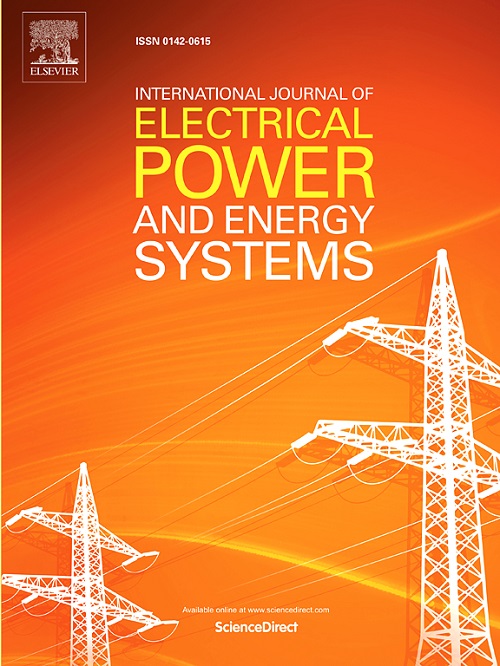Bi-objective optimization of magnetic core loss and magnetic energy transfer of magnetic element based on a hybrid model integrating GAN and NSGA-II
IF 5
2区 工程技术
Q1 ENGINEERING, ELECTRICAL & ELECTRONIC
International Journal of Electrical Power & Energy Systems
Pub Date : 2025-07-05
DOI:10.1016/j.ijepes.2025.110834
引用次数: 0
Abstract
Magnetic core loss and magnetic energy transfer are important indicators of the performance of magnetic elements in electronic devices. However, there is a restrictive relation between those two indicators. For example, increasing magnetic field intensity or frequency will enhance the transmission capability of magnetic elements but will exacerbate magnetic core loss. Conversely, reducing the magnetic field intensity or frequency will decrease magnetic core loss but compromise transmission efficiency. To address this challenge, this study proposes a bi-objective optimization method for magnetic elements under complex operating conditions (such as high-frequency and non-sinusoidal waveforms), which integrates Generative Adversarial Network (GAN) and Non-dominated Sorting Genetic Algorithm II (NSGA-II). The role of the GAN module in the hybrid model is to generate a diverse initial population to expand the search space and improve population diversity. Meanwhile, the role of the NSGA-II module is to apply non-dominated sorting and crowding distance calculations to optimize magnetic core loss and magnetic energy transfer. Experimental results show that the proposed optimization model effectively reduces magnetic core loss and significantly enhances magnetic energy transfer under high-frequency and non-sinusoidal conditions. Furthermore, a comparison with the NSGA-II algorithm is conducted to verify the efficiency of the bi-objective optimization model.
基于GAN和NSGA-II混合模型的磁性元件磁芯损耗和磁能传递双目标优化
磁芯损耗和磁能传递是电子器件中磁性元件性能的重要指标。然而,这两个指标之间存在一种限制性关系。例如,增加磁场强度或频率会增强磁性元件的传输能力,但会加剧磁芯损耗。相反,降低磁场强度或频率会降低磁芯损耗,但会影响传输效率。为了解决这一挑战,本研究提出了一种复杂工作条件下(如高频和非正弦波形)磁性元件的双目标优化方法,该方法集成了生成对抗网络(GAN)和非支配排序遗传算法II (NSGA-II)。GAN模块在混合模型中的作用是生成多样化的初始种群,以扩大搜索空间,提高种群多样性。同时,NSGA-II模块的作用是应用非主导分选和拥挤距离计算来优化磁芯损耗和磁能传递。实验结果表明,该优化模型在高频和非正弦条件下有效降低了磁芯损耗,显著提高了磁能传递。并与NSGA-II算法进行了对比,验证了双目标优化模型的有效性。
本文章由计算机程序翻译,如有差异,请以英文原文为准。
求助全文
约1分钟内获得全文
求助全文
来源期刊
CiteScore
12.10
自引率
17.30%
发文量
1022
审稿时长
51 days
期刊介绍:
The journal covers theoretical developments in electrical power and energy systems and their applications. The coverage embraces: generation and network planning; reliability; long and short term operation; expert systems; neural networks; object oriented systems; system control centres; database and information systems; stock and parameter estimation; system security and adequacy; network theory, modelling and computation; small and large system dynamics; dynamic model identification; on-line control including load and switching control; protection; distribution systems; energy economics; impact of non-conventional systems; and man-machine interfaces.
As well as original research papers, the journal publishes short contributions, book reviews and conference reports. All papers are peer-reviewed by at least two referees.

 求助内容:
求助内容: 应助结果提醒方式:
应助结果提醒方式:


